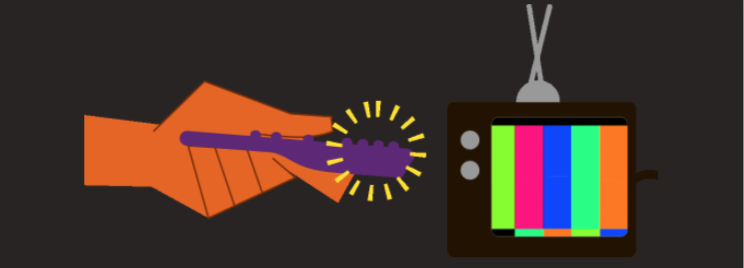Viewers stream to new Internet-based entertainment channels
March 11, 2021
When you are bored and have nothing to do – and let’s face it, that’s the norm these days – watching shows and movies seems to be the thing to do.
And with 78 percent of consumers paying for some type of internet video streaming thanks to the pandemic, according to Media Play News, chances are you watched Netflix, Hulu, or Amazon Prime. That’s an 18 percent rise in streaming subscriptions over 2019 and a huge increase from 2009, when just 10 percent of consumers subscribed to a streaming service.
“Streaming has made my life easier because I don’t have to flip through the channel guide to see what’s on and don’t have to wait a week to see the new episode of a show I like,” said Daniel Garcia, junior. “With streaming, I can watch whatever show I want, whenever I feel like it.”
Streaming is a method of transmitting or receiving data from a computer network. According to PC Mag, the top three streaming services of 2020 were Netflix, Youtube TV, and Hulu+, while Survey Monkey found people watch Netflix, Hulu, and Amazon Prime. (for an infographic looking at some popular streaming sites, click here)
“I find myself watching more streaming services because I no longer have cable,” said Laura Moakley, art teacher. “I like having control over what I watch. I love no commercials, the variety of shows – there is just so much out there.”
People like Moakley who have dropped cable after a long time are said to have “cut the cord.” Major pay TV-providers reported declines in subscribers to traditional cable and satellite television packages, according to Fortune. And in the US last year, Netflix had about 74 million subscribers, 31 million more than cable giant HBO.
“I don’t think ‘cutting the cord’ can save significant amounts of money because I’ve tried and with all streaming services, you need the internet,” said Matt Pasca, English teacher. “Pretty much all cable services come as a package with cable and internet, so it’s hard to get rid of cable entirely.
Cable TV is still “alive,” but a person’s age makes a difference. According to a study by Survey Monkey, half of the respondents who said that they still watch cable are 60 years and older while over a quarter of 18-29-year-olds say they prefer streaming services. People who have cable say that they plan on getting rid of their services in the near future.
“I believe that adults prefer cable TV because that’s what they’ve always known,” said Jazmine Torres, senior. “Teens prefer streaming services because it’s more convenient and easier to binge-watch,”
The success of streaming is due to the convenience and pricing, according to Forbes. On Long Island, basic cable is between $75-$85 a month and premiere services such as Showtime and HBO can be anywhere from $10-$15 more a month. Subtracting the cost of monthly internet fees, which most people have in addition to their cable subscription, Netflix is about $10, while Hulu is about six dollars. Some streamers like Crackle and Tubi offer free movies and TV.
“With streaming nowadays, most people get rid of cable because it saves money,” said Brandon Hosein, senior. “I barely watch TV because I have Netflix and other streaming sites.”
According to Young Hollywood, Streaming services let viewers choose what to watch from a wide spread of content, with 80 percent of what Netflix customers watch coming from their personalized recommendations.
“I like the streaming shows better than TV because the commercials are not there,” said Myles Rabin, junior. “I think the reason regular TV shows lose viewers is that there’s a lot of commercials. With streaming, people just move on to the next show to watch without interruption.”
By cutting the cord and switching to Internet-based TV, viewers can watch their own collection of movies and TV shows, according to Quora. Marketing Charts reports that the percentage of households that are watching premium video on their phones on a weekly basis has increased from 23 percentage in 2019 to 30 percent in 2020.
“Today, we use subscription outlets like Netflix, Hulu, Disney+, Apple TV,” said Franchesca Moreno, junior. “With these outlets, we’re able to bring them anywhere we go by just bringing our electronic devices.”
The streaming industry has become so massive that many networks are creating their own online channels, with NBC launching Peacock in the middle of the pandemic and CBS turning its CBS All Access into Paramount+, a service taps into a vast catalog of old tv shows and movies. Hulu was already home to day-after-broadcast episodes of ABC shows. Even cable giant HBO has gotten into the streaming game with HBO Max, which offers Warner Brothers movies and TV shows along with its original shows.
“Every time I speak to my students in terms of what they watch, they all watch via streaming, rarely do they actually put on a TV anymore,” said Ms. Kalter, English teacher. “We’re in a time in a society where we want immediate gratification; we don’t want to wait for the next episode.”

